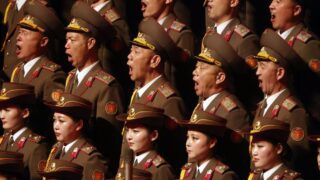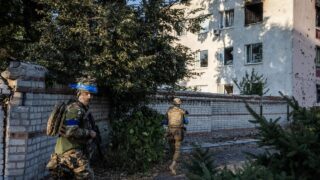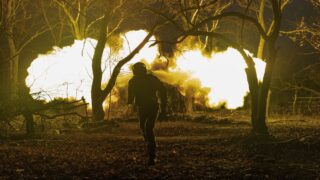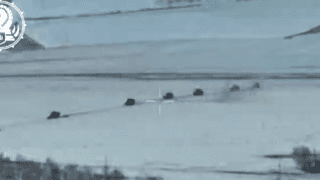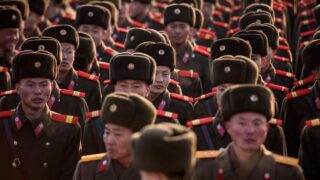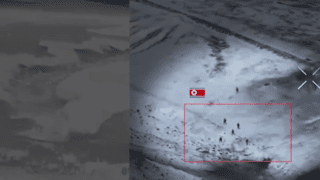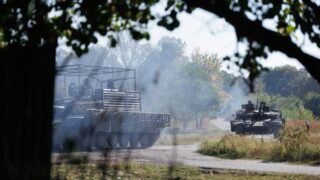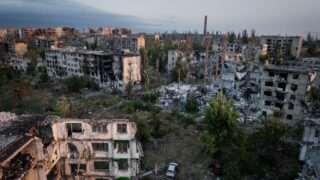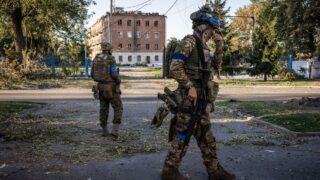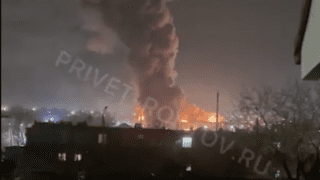
ATACMS boost for Ukraine as Trump inauguration looms
The Russian Defense Ministry claimed on Nov. 19 that Ukraine had launched the U.S.-made ATACMS missiles against Russia's Bryansk Oblast.
Hours prior, Ukraine struck a Russian military facility in Karachev, Bryansk Oblast, a two-hour drive from the Ukrainian-controlled part of Russia.
President Joe Biden's decision to finally allow Ukraine to use ATACMS against Russian and North Korean forces comes with a looming deadline — the inauguration of Donald Trump on Jan. 20.
The new president is widely expected to lead a dramatic shift in U.S. policy towards the war, focused on attempts to get Kyiv and Moscow to negotiate.
Both sides will be looking to enter any possible talks in the most favorable position possible, with territory in Kursk Oblast potentially being some of the most politically valuable of all.
"Many of our fellow citizens will be hurt by these words, but the defense of Kursk Oblast is a higher priority than the Kurakhiv bridgehead, Donetsk, and Luhansk oblasts," Dmytro Zhmailo, a military expert and executive director of the Ukrainian Security and Cooperation Center, told the Kyiv Independent.
The ability to finally use the long-range missiles to attack military facilities in Kursk Oblast and its surroundings is expected to give Ukraine a better chance to hold on to the Russian territories that are said to be the last major ace in Kyiv's rather unfavorable hand.
What is ATACMS?
The Army Tactical Missile System (ATACMS) is a U.S.-made, short-range, supersonic ballistic missile.
The ATACMS have a range of up to 300 kilometers, can be equipped with either high explosive or cluster munition warheads, and are fired from U.S.-made 142 High Mobility Artillery Rocket System (HIMARS).
They're not new to the war in Ukraine — in the fall of 2023, the U.S. began supplying Kyiv with an older model of ATACMS with a range of around 165 kilometers.
In the spring of 2024, the New York Times (NYT) reported that the U.S. had shipped around 100 updated versions of ATACMS missiles, which can reach up to 300 kilometers.
Ukraine has put both variants into effect on the battlefield, striking targets in occupied Crimea and other parts of Russian-occupied parts of Ukraine.
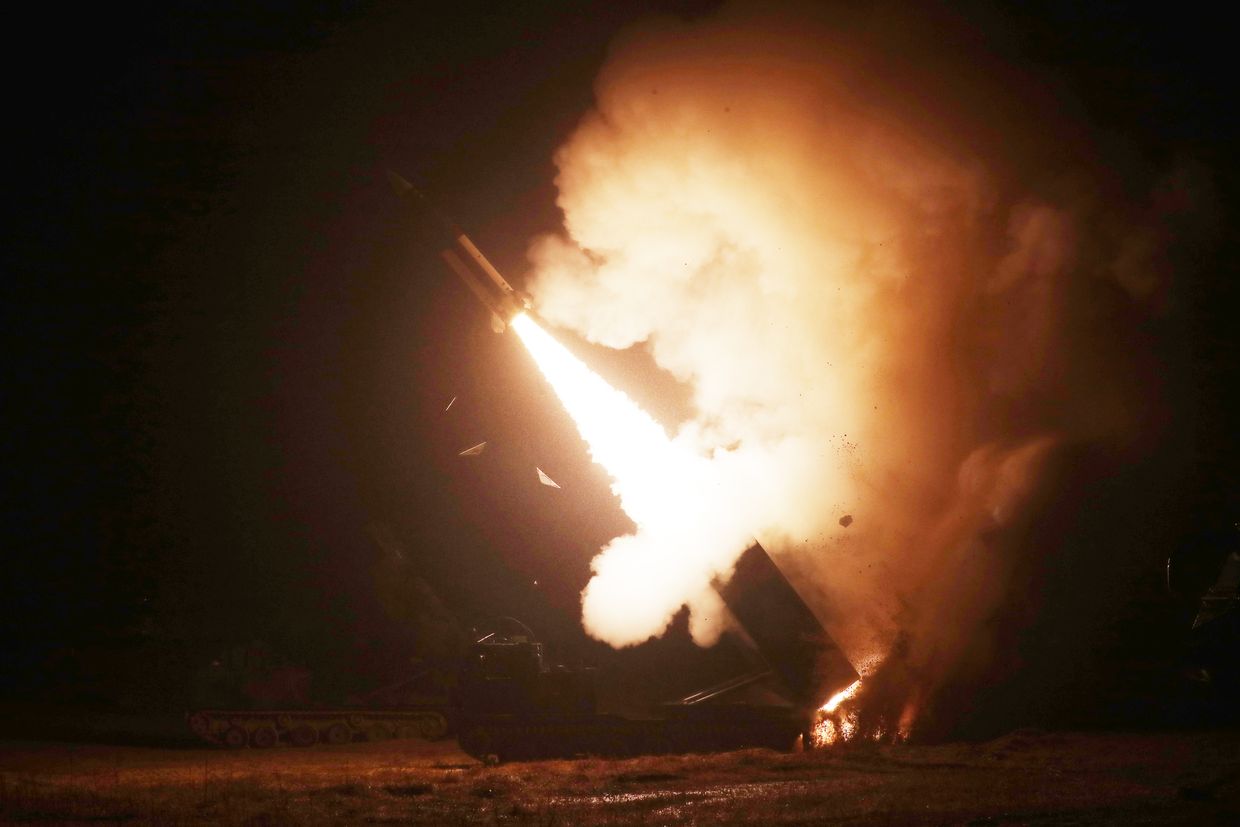
How could ATACMS help in Kursk?
After Ukraine launched its incursion into Kursk Oblast, Kyiv said one of the main aims of the operation was to prevent Moscow from sending additional reinforcements to the front in Ukraine's east.
Yet, Russia's grinding advances in Donetsk Oblast have only gained pace in the months since, with large chunks of Ukrainian territory, sometimes including entire towns, lost on a near-daily basis in southern Donetsk Oblast.
Without diverting troops from eastern Ukraine, Russia has been able to assemble a force of nearly 50,000 troops in Kursk Oblast, President Volodymyr Zelensky said on Nov. 11, including more than 10,000 soldiers from North Korea.
Militarily, this particular aim in Kursk Oblast has failed, but Trump's victory in the U.S. presidential election has dramatically changed the calculus.
The president-elect has long promised to bring a swift end to the war in Ukraine, and although he has not elaborated on his plans, it's been widely reported that it will involve a freezing of the front lines shortly after he takes office.

According to experts who spoke to the Kyiv Independent, Ukraine's territory in Kursk has now soared in political value and would be a strong bargaining chip in any negotiations.
"Moscow wants to go into any negotiations with the dominant narrative that Ukraine is getting progressively weaker and less able to sustain the war, with allies that are growing tired of supporting Kyiv, whereas Moscow can keep up this level of effort forever," Jenny Mathers, senior lecturer in international politics at Aberystwyth University, told the Kyiv Independent.
"Anything that raises questions about that narrative, such as a newly empowered Ukrainian force in Russia, or the easing of restrictions on Ukraine's use of Western weapons, or greater energy and enthusiasm for the fight on the side of Ukraine's allies, is a danger to Russia's position."
If Ukraine can hold on until Trump takes office, it could make the idea of Russian President Vladimir Putin agreeing to any proposal to freeze the war unfeasible, as freezing the war with a front line inside Russia would likely be a non-starter for the Kremlin.
"Our presence in Russia negates its power," Zhmailo said. "It also strengthens our negotiating position, and offsets the principle of the Russians, various peace doves, the Chinese-Brazilian initiative, and the African initiative to freeze the actual front line.
"Our presence in Russia negates its power. It also strengthens our negotiating position."
"That is why the Russians have become so active now."
But this all relies on one thing — Ukraine being able to hold on to territory in Kursk Oblast, and fend off the 50,000-strong force now assembled to assault Kyiv's positions.
According to John Foreman CBE, the U.K.'s former defense attache in Moscow from 2019 to 2022, the decision to allow Ukraine to use ATACMS against Russian and North Korean forces in Kursk Oblast is at least in part an effort to help Kyiv hold on to as much territory as possible before Trump takes office and tries to freeze the front lines.
"Plus a reaction to North Korea sending troops and Russia pummeling Ukrainian cities," he added.
Can ATACMS make a difference in Kursk Oblast?
"Like with any weapon introduced it will not win the war by itself," Sascha Bruchmann, a military analyst at the London-based International Institute for Strategic Studies, told the Kyiv Independent.
"But it will make it more difficult for the Russians to command their troops effectively and supply them adequately from even further afar."
Bruchmann points to the effect U.S.-supplied HIMARS had in Ukraine when they first arrived in the summer of 2022, compelling Russian forces to move command centers and logistical nodes out of their 80-kilometer range after a series of devastating Ukrainian strikes.
"It will make it more difficult for the Russians to command their troops effectively, and supply them adequately from even further afar," Bruchmann said.
"For example, Russian transport hubs such as train junctions that feed the front lines in Kursk or Belgorod are now more vulnerable."
Ukrainian reported an attack against a Russian arsenal in Karachevб overnight on Nov. 19, reportedly ефкпуеув stored artillery ammunition, including North Korean munitions, KAB guided bombs, anti-aircraft missiles, and rocket launcher ammunition.
Retired U.S. Lieutenant General Ben Hodges agreed with Burchman, saying while strikes like this won't be a "game changer," it is nonetheless "still a positive step."
"I would anticipate that the Ukrainian General Staff will use these to target Russian headquarters, logistics, and artillery," he told the Kyiv Independent.
"That's how you defeat mass and mass is the only advantage that the Russian forces have, the big numbers." On the ground in Kursk Oblast, the political machinations of Biden's ATACMS decision prompted more questions than answers from at least one soldier.
"That's how you defeat mass and mass is the only advantage that the Russian forces have, the big numbers."
"I look at it all, and it's all a big show to me," Dmytro, a medic with Ukraine 61st Mechanized Brigade who has been stationed in Kursk Oblast since the start of the incursion, told the Kyiv Independent.
"Why didn't they give it earlier? Why did we take so long? Because it was simply profitable for someone to drag it all out, that's all. That is, human life is not valued, human resources are not valued, but something else is valued."

What is Kyiv saying?
Officially, holding territory in Kursk Oblast is not about holding a bargaining chip in future negotiations but defending Ukraine's Sumy Oblast from attacks, Ukrainian lawmaker and the chair of the parliament's foreign affairs policy Oleksandr Merezhko told the Kyiv Independent.
But he added that as well as having a military purpose, it does hold political weight in the context of peace talks.
"It might help to force Putin to negotiate in earnest," he said, adding: "Because holding this territory shows the weakness of Putin, his inability to guarantee security within the country."
While it may not be the official position, Zelensky has alluded to the bargaining power of holding territory in Kursk Oblast, saying on Sept. 4 that the "same attitude" was applied to trading captured territories as trading captured prisoners of war (POWs).
And the mood music in Kyiv has shifted dramatically since the Nov. 5 election, with Zelensky saying on Nov. 16 that the war will "end faster" under a Trump administration, adding that Ukraine must do everything possible to end the war through diplomatic means.
"There is a tendency to see Trump's election and looming presidency as nothing but bad news for Ukraine, but the sense that this stage of the war is coming to some kind of a resolution may have created some urgency and pace that may work in Ukraine's favor," Mathers said.
"Without the sense of the ticking clock produced by Trump's approaching inauguration, there is the risk that Ukraine's territorial gains in Russia could have just dwindled to little or nothing, gradually over time.
"So, by creating a new momentum, I think Trump has affected events quite a lot."






